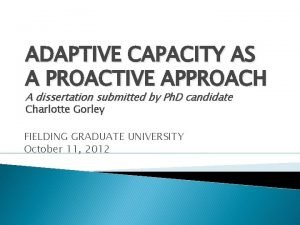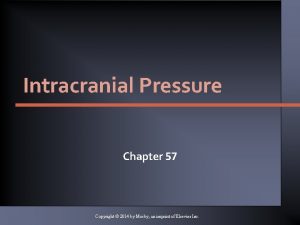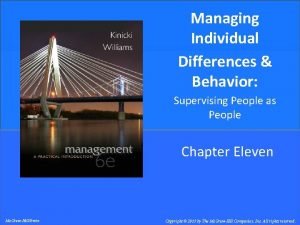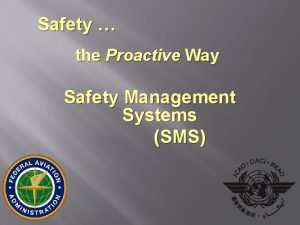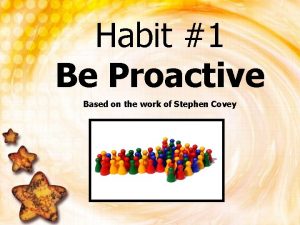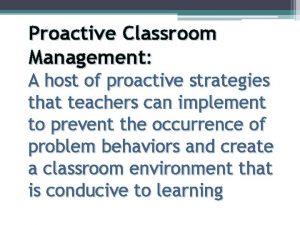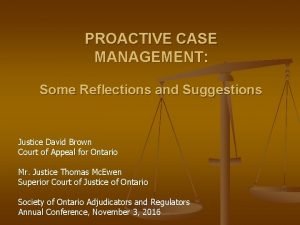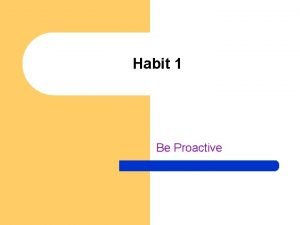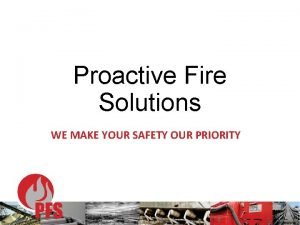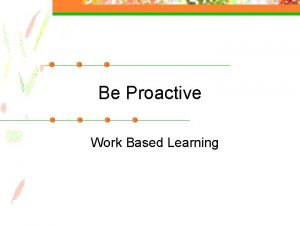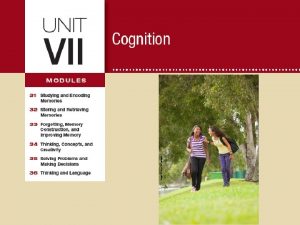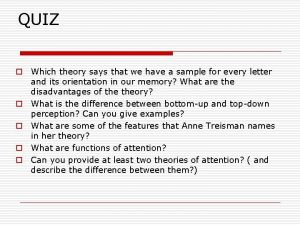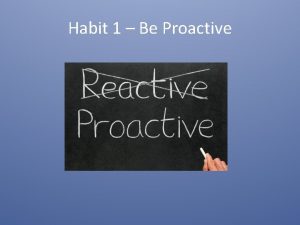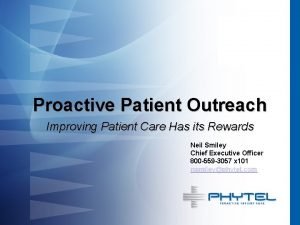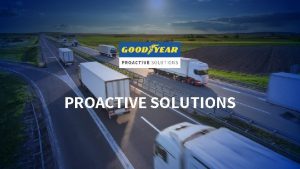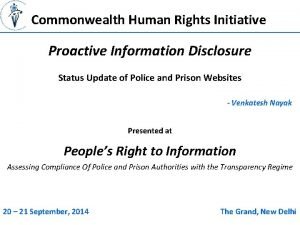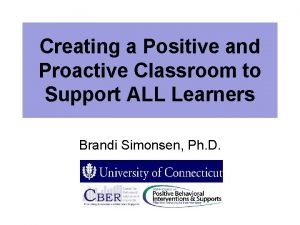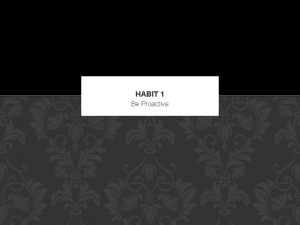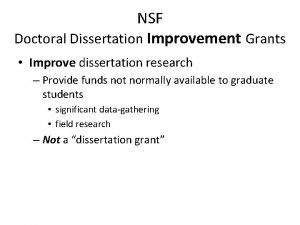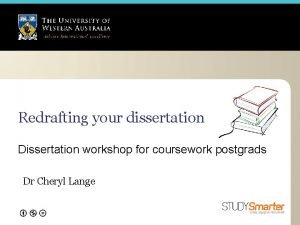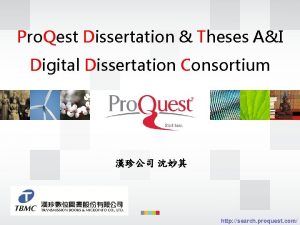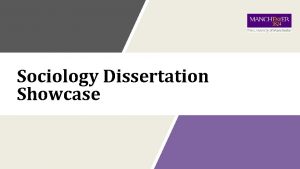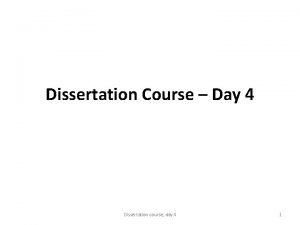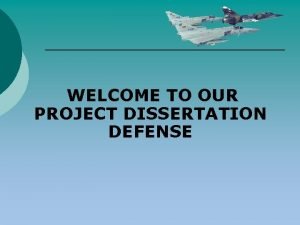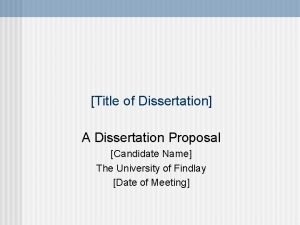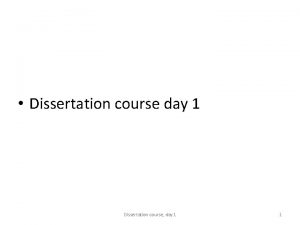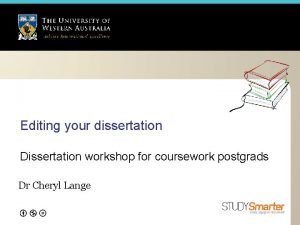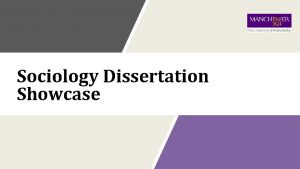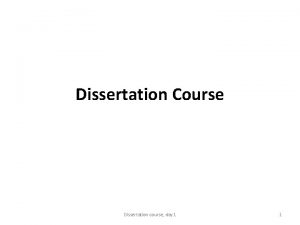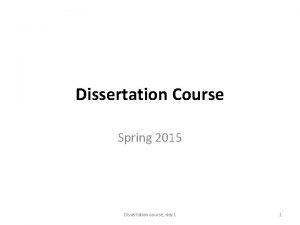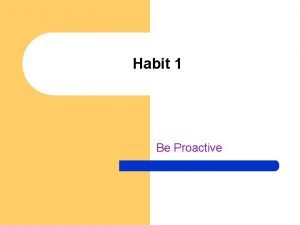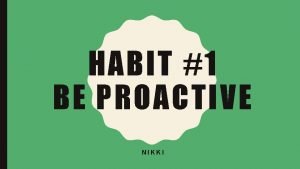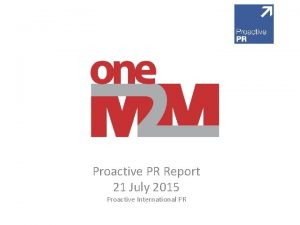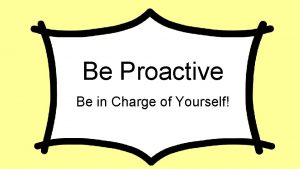ADAPTIVE CAPACITY AS A PROACTIVE APPROACH A dissertation































- Slides: 31

ADAPTIVE CAPACITY AS A PROACTIVE APPROACH A dissertation submitted by Ph. D candidate Charlotte Gorley FIELDING GRADUATE UNIVERSITY October 11, 2012

Presentation Outline � Objective � Definitions � The Need � Current Literature � Framework, Question, & Methodology � Findings � Strengths, Limitations, & Future Studies � Contribution, Implications, & Implementation � Acknowledgements

Objective To add new knowledge to our current understanding of adaptive capacity in non-profit organizations

Operational Definitions Adaptive Capacity: A dynamic, organic approach to proactively preparing for change and anticipating that unpredictable forces will shape an organization’s surroundings Non-Profit Organization: An organization that invests any net earnings back into programs or services instead of distributing to shareholders or owners

Proactive Adaptation

Reactive Adaptation

The Need

Current Literature

Current Literature Learning Organization Culture Perkins et al, 2007 Heifetz, Grashow, & Linsky, 2009 Hargrove, 1995 Leadership Jaskyte, 2004, 2011 Schein, 1992 Heifetz, Grashow, & Linsky, 2009

Current Literature Ideas, Creativity, Innovation Mc. Donald, 2007 Jaskyte, 2011 Effective & Healthy Systems Senge, 1990 Epstein, 2008 Mitchell & Learmond, 2010 Future Orientation Mc. Donald, 2007 Jaskyte, 2011

Current Literature Communication Heifetz, Grashow & Linsky, 2009 Schein, 1992 Senge, 1990 Entrepreneurial Mindset Mc. Donald, 2007 Christensen & Ebraham, 2007 Mitchell & Learmond, 2010 Staber & Sydow, 2001 Scott & Davis, 2007

Framework

The Question How do non-profit organizations develop and exhibit the capacity to proactively adapt to change?

The Sub-Questions � � � � What kind of changes do you see in the work you do with your non-profit? What internal changes are affecting your non-profit organization? What external changes are affecting your non-profit organization? How do you view adaptability in your non -profit organization? Can you share a story about how your non-profit organization adapts to change? What do you think your non-profit organization needs to continue to do? What do you think your non-profit needs to change? In your view, how should a non-profit address these changes?

Research Methodology � Grounded Theory � Semi-Structured Interviews � Pilot Study ◦ Consent ◦ Digital Recording ◦ Transcription � Formal Research � Data Analysis using NVivo Software

Findings

Findings The Nature of Change-Drivers � Technology � Demographics � Societal Shifts � Economic Factors � Regulatory Requirements � Political Environments

Findings What Participants Said “It’s knowing that there’s this very fast trend out there with technology and knowing that we have got to do that and that we have to be making advances in that way because it’s going to become more and more but also knowing that there’s this whole group of people that need to be served in another way and there’s also this intangible thing that people gain at our programs that’s not just about information. It’s about connecting with others and feeling that they’re not so isolated and regaining that sense of emotional support and person connectedness and that has a value to it that’s very hard to quantify. ”

Findings What Participants Said “It’s having enough balance so there’s enough structure that there’s some consistency and safety and some adherence to the things that have to be adhered to while allowing the freedom to shape the program in a way that makes sense for each group. ”

Findings Participants’ Adaptability Gauge � Reputation for Providing Value � Solid Financial Management � Clear Identity & Vision � Partnerships, Relationships, & Collaboration � Continuous Learning � New Mindsets � Stretch Goals � Consistency

Findings What Does It Mean? Adaptive capacity exists when the necessary elements are present in the right combination. People, circumstance, resources, connections, opportunity are the ingredients for adaptive capacity. Which ingredients are combined, to what extent, determines adaptive capacity for the particular non-profit organization.

Findings Tensions & Balance

Strengths of This Study � Rooted in the participants’ voices � Systematic and consistent research process � Cross-section of viewpoints � Pilot Study Conducted

Limitations & Future Studies � Small number of participants (12) � Small number of organizations (5) � Expand to larger geographic area � Expand beyond English speaking participants � Expand to differentiate between male and female viewpoints and/or by age group

Contribution & Implications � These findings can enhance the ability for non-profit organizations to develop adaptive capacity to better serve the communities and programs they support. � Using these findings, non-profit organizations can tailor their actions and approaches to build adaptive capacity in their organizations. � An unintended benefit is that it got people thinking about adaptive capacity and how it was demonstrated in their organization.

Implementation � Awareness of the nature of changes in the external environment and the internal culture � Cultivating a culture that is comfortable with ongoing change and hiring accordingly � Examination of internal processes � Build diversity in funding sources, expertise, products and services � Foster transparency, trust, respect, integrity and credibility – walk the talk

Implementation � Encourage and mentor those that show adaptive capacity � Stay true to the core values of the organization � Create and tap into networks � Use technology and keep current

Acknowledgements Al Gorley

Acknowledgements Dottie Agger-Gupta

Acknowledgements Jo-Anne Clarke Student Reader Brigitte Harris, Ph. D External Examiner Leonard Baca, Ed. D Faculty Reader Nancy Wallis, Ph. D Faculty Reader

Questions?
 Adaptive capacity
Adaptive capacity Decreased intracranial adaptive capacity
Decreased intracranial adaptive capacity Design capacity and effective capacity examples
Design capacity and effective capacity examples Research approach example
Research approach example International market selection model
International market selection model Traditional approach vs object oriented approach
Traditional approach vs object oriented approach Multiple approach-avoidance conflict
Multiple approach-avoidance conflict Tony wagner's seven survival skills
Tony wagner's seven survival skills Comparison of virtual circuit and datagram network
Comparison of virtual circuit and datagram network Bandura's reciprocal determinism
Bandura's reciprocal determinism Theoretical models of counseling
Theoretical models of counseling Repressed memories
Repressed memories Proactive secure development
Proactive secure development Microsoft premier support services
Microsoft premier support services Proactive teacher
Proactive teacher Proactive personality
Proactive personality Proactive sms
Proactive sms Inactivism planning
Inactivism planning 7 habits proactive vs reactive
7 habits proactive vs reactive 16 proactive classroom management strategies
16 proactive classroom management strategies Proactive case management
Proactive case management Habit 1: be proactive examples
Habit 1: be proactive examples Proactive fire solutions
Proactive fire solutions Proactive working
Proactive working Reactive change is change that
Reactive change is change that Retroactive vs proactive interference
Retroactive vs proactive interference Proactive interference psychology definition
Proactive interference psychology definition Proactive vs reactive 7 habits
Proactive vs reactive 7 habits Phytel appointment reminder
Phytel appointment reminder Goodyear proactive solutions
Goodyear proactive solutions Proactive commonwealth
Proactive commonwealth Proactive behavior examples
Proactive behavior examples
